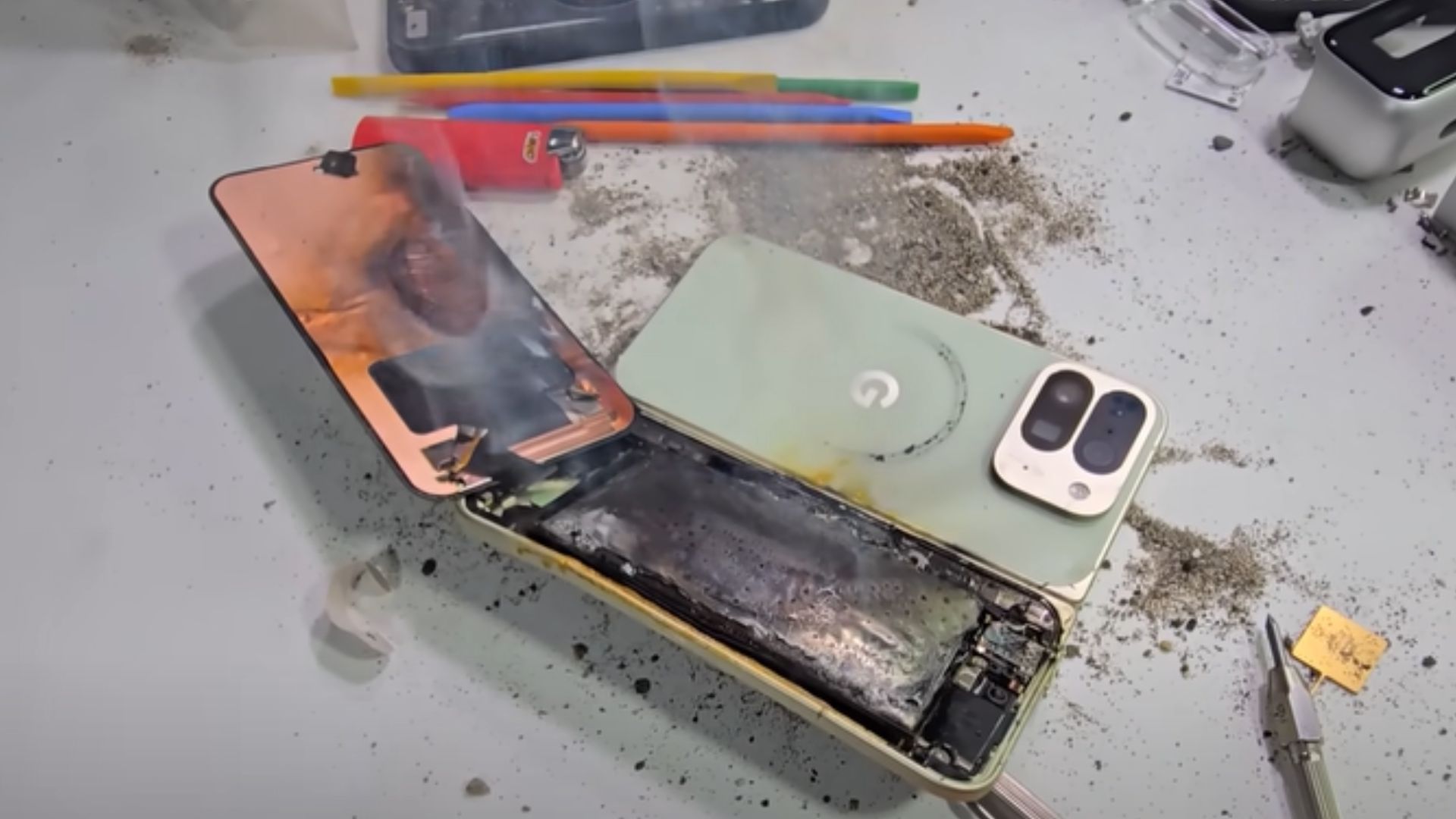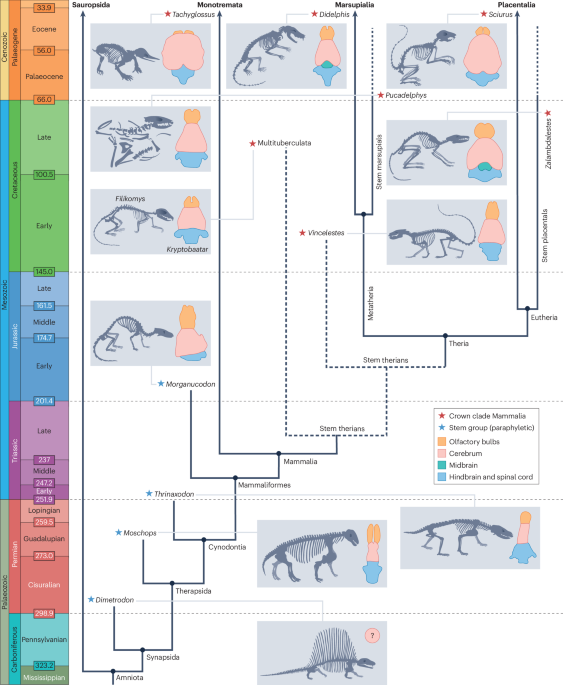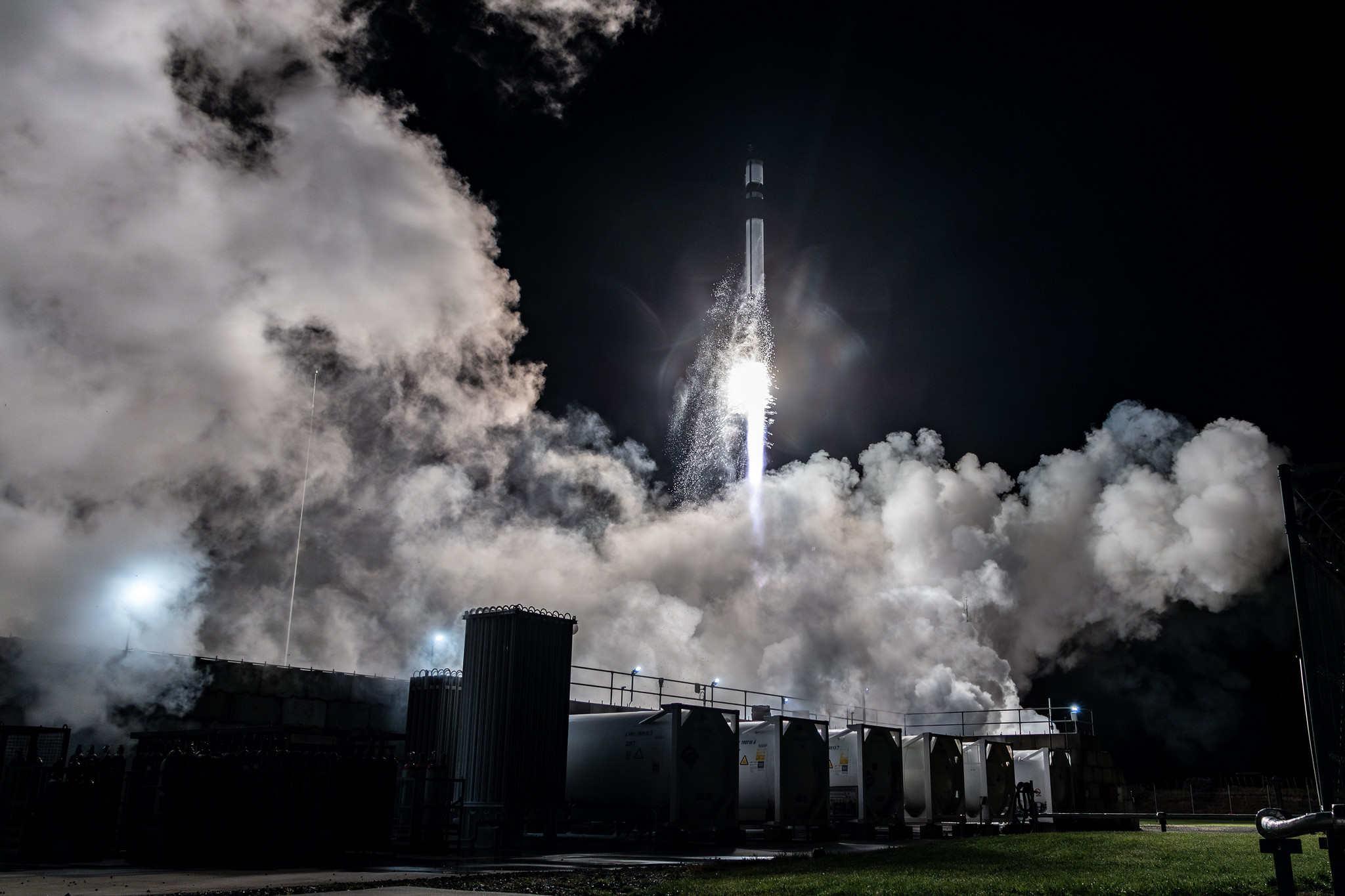Google’s Pixel 10 Pro Fold became the first smartphone to explode during a JerryRigEverything durability test, marking a shocking moment in YouTuber Zack Nelson’s decade-long history of stress-testing devices.
Known for pushing phones to…

Google’s Pixel 10 Pro Fold became the first smartphone to explode during a JerryRigEverything durability test, marking a shocking moment in YouTuber Zack Nelson’s decade-long history of stress-testing devices.
Known for pushing phones to…

SHANGHAI, CHINA – AUGUST 14, 2025 – Tourists are visiting the Bund in Shanghai, China on August 14, 2025.
Cfoto | Future Publishing | Getty Images
Asia-Pacific markets opened higher Wednesday, breaking ranks with Wall Street’s declines after U.S. and China exchanged blows in a renewed trade feud.
U.S. President Donald Trump on Tuesday stateside criticized China for not buying soybeans, calling it an “an economically hostile act.” He also threatened “retribution” such as a cooking oil embargo.
“Volatility remains elevated, and the best explanation is the strained relationship between the U.S. and China,” Veteran investor Louis Navellier wrote in a note published Wednesday.
Japan’s benchmark Nikkei 225 index rose 0.3%, while the Topix added 0.75%. South Korea’s Kospi jumped 0.8%, while the small-cap Kosdaq added 0.83%.
Australia’s ASX/S&P 200 was up 0.93%.
Hong Kong’s Hang Seng Index was set to open higher, with its futures contract trading at 25,763, against the index’s previous close of 25,441.35.
Investors will be keeping an eye on China’s inflation data for September coming out later in the morning.
Overnight in the U.S., the S&P 500 closed down 0.2% to 6,644.31 in a wild day that saw the benchmark fall as much as 1.5% and gain 0.4% at its highs.
The Nasdaq Composite was off by 0.8% to 22,521.70, although at one point it had fallen as much as 2.1%.The Dow Jones Industrial average closed up 0.4%, or 202.88 points, to 46,270.46 after gaining nearly 1% at one point.
Federal Reserve Chair Jerome Powell on Tuesday suggested the central bank is nearing a point where it will stop reducing the size of its bond holdings, and provided a few hints that more interest rate cuts are in the cards.
— CNBC’s Liz Napolitano and Fred Imbert contributed to this report.

A marketing authorization application (MAA) for the use of relacorilant in patients with platinum-resistant ovarian cancer has been submitted to the European Medicines Agency, according to an announcement from Corcept Therapeutics Incorporated.1
The submission was supported by findings from the
“Our MAA submission brings us a step closer to our goal of delivering relacorilant to patients with platinum-resistant ovarian cancer,” Joseph Belanoff, MD, chief executive officer of Corcept Therapeutics, stated in a news release. “Better treatment options are urgently needed. Relacorilant has the potential to redefine how platinum-resistant ovarian cancer is treated.”
The phase 3 trial enrolled patients (n = 381) with epithelial ovarian, primary peritoneal or fallopian tube cancer who experienced progression within 6 months after their last dose of platinum therapy.2 Patients had an ECOG performance status of 0 or 1, had previously received 1 to 3 lines of therapy, and had prior exposure to bevacizumab (Avastin).
Participants were randomized 1:1 to receive 150 mg of relacorilant plus 80 mg/m2 of nab-paclitaxel or 100 mg/m2 (n = 188) of nab-paclitaxel alone (n = 193). Treatment continued until disease progression or intolerable toxicity. Stratification factors included prior lines of therapy (1 vs >1) and region (North America vs Europe vs Korea, Australia, and Latin America).
The dual primary end points of the study were PFS by blinded independent central review and RECIST 1.1 criteria and OS. Secondary end points included investigator-assessed PFS, objective response rate (ORR), duration of response, clinical benefit rate (CBR), response by CA-125 Gynecologic Cancer Intergroup (GCIG) criteria, combined response by GCIG and RECIST criteria, and safety.
The median patient age was 61 years (range, 26-85) in the relacorilant arm and 62 years (range, 33-86) in the nab-paclitaxel–alone arm. Most patients were White (72.3% vs 69.9%), and slightly more than half were from Europe (56.9% vs 56.5%). About one-third had an ECOG performance status of 1 or 2 (28.2% vs 32.6%), and around 12% had BRCA1/2 mutations (12.2% vs 12.4%). In the experimental arm, 8.0%, 48.9%, and 43.1% of patients received 1, 2, or 3 prior lines of therapy, respectively; in the control arm, these respective rates were 9.3%, 46.1%, and 44.6%. In the experimental arm, 6.9% of patients were primary platinum refractory, 35.6% had received at least 1 prior line of therapy in the platinum-resistant setting, and 4.3% had prior taxane exposure in the platinum-resistant setting; in the control arm, these rates were 6.7%, 42.5%, and 3.6%. Prior therapies received in the combination and monotherapy arms were bevacizumab (100%; 100%), taxanes (99.5%; 99.5%), pegylated liposomal doxorubicin (64.4%; 64.8%), and PARP inhibition (60.6%; 62.2%).
The median PFS with relacorilant plus nab-paclitaxel was 6.54 months (95% CI, 5.55-7.43) vs 5.52 months (95% CI, 3.94-5.88) with nab-paclitaxel alone, translating to a 30% reduction in the risk of disease progression or death (HR, 0.70; 95% CI, 0.54-0.91; P = .0076). The hazard ratio for PFS per investigator assessment was 0.71 (P = .0030). The 6-month PFS rates in the respective arms were 52% and 42%; the 12-month PFS rates were 25% and 13%.
At the time of the interim analysis, which had a data maturity of 50%, the addition of relacorilant to nab-paclitaxel was also found to improve OS over nab-paclitaxel alone, at a median of 15.97 months (95% CI, 13.47-not reached) and 11.50 months (95% CI, 10.02-13.57), respectively (HR, 0.69; 95% CI, 0.52-0.92; nominal P = .0121). The 12-month OS rates in the respective arms were 60% and 49%.
The relacorilant combination elicited an ORR of 36.9% vs 30.1% with nab-paclitaxel monotherapy, translating to a 6.8% improvement (P = .17). The CBRs in the respective arms were 51.1% and 38.9%, translating to a 12.2% improvement (P = .016).
In terms of safety, ascites was found to be less common in those given relacorilant vs not, with unadjusted incidence rates of 5% and 11%, respectively, for all-grade ascites; for grade 3 or higher, the rates were 3% and 5%.
Treatment-emergent adverse effects (TEAEs) occurred in all patients who received the combination (n = 188) vs 99.5% of those who received the monotherapy (n = 190); they were grade 3 or higher for 74.5% and 59.5% of patients, respectively. Serious adverse effects (AEs) were reported in 35.1% of those in the combination arm and 23.7% of those in the monotherapy arm. AEs that resulted in treatment discontinuation for more than 2 patients were intestinal obstruction and paresthesia. No fatal AEs were tied to relacorilant.
In a past interview with OncLive®,

Finlay, B. in Encyclopedia of Neuroscience (ed. Squire, L. R.) 337–345 (Academic, 2009).
Halley, A. C. & Krubitzer, L. Not all cortical expansions are the same: the coevolution of the neocortex and the dorsal thalamus in mammals. Curr. Opin….

YouTube has announced a raft of new updates, including a UI refresh, expanded voice replies, expanded access to courses, an update on fixable violations, and more.
First off, YouTube’s rolling…

If you purchase an independently reviewed product or service through a link on our website, The Hollywood Reporter may receive an affiliate commission.
A new true crime drama is about to hit streaming. Based on what’s commonly referred to…

Parasites in the intestines. Sounds alarming right? If a gastroenterologist’s words are to go by then it is. According to Dr Joseph Salhab, a gastroenterologist with a following of 1.5M on Instagram, you could be…

Carrie Preston said Julia Roberts was “mean” to her on the set of 2009’s Duplicity, but she had a good reason.
During a recent interview on Jesse Tyler Ferguson’s Dinner’s on Me podcast, the actress recounted her experience…

WASHINGTON — Rocket Lab launched a spacecraft for one Japanese radar imaging company Oct. 14, just days after signing a contract for additional launches for another.
An Electron rocket lifted off from Rocket Lab’s Launch Complex 1 in New Zealand at 12:33 p.m. Eastern. The payload, a StriX synthetic aperture radar (SAR) imaging satellite for Synspective, deployed from the rocket’s kick stage about 50 minutes after liftoff. The satellite was placed into its intended orbit at an altitude of 583 kilometers and an inclination of 42 degrees.
The mission was Rocket Lab’s seventh launch for Synspective since 2020 but its first since December 2024. All of Synspective’s SAR satellites launched to date have flown on Electron.
Synspective said the spacecraft is the first of its third generation of satellites. “Building upon our accumulated operational experience and technological expertise, we have achieved significant advancements in observation performance, reliability and scalability,” Motoyuki Arai, Synspective’s founder and chief executive, said in a statement. The company did not disclose details about the improvements in the new generation.
Synspective plans to deploy a constellation of 30 satellites by 2030 to provide frequent global coverage. Most of those satellites will be launched by Electron through a backlog of 20 launches in the coming years, including a contract for 10 additional missions signed Sept. 30.
While Synspective has exclusively used Electron so far, it has signed with other launch providers for future missions. The company reached a contract earlier this year with SpaceX to launch two satellites on rideshare missions and in July signed a deal with launch services provider Exolaunch for 10 satellites starting in 2027.
The Synspective launch came a week after Rocket Lab signed a new launch contract with iQPS, another Japanese company developing a SAR constellation. The new contract covers three launches starting no earlier than 2026 and adds to an existing backlog of four missions.
Electron has launched five iQPS missions to date, the first in 2023. The other four took place between March and August this year as part of a pair of four-launch contracts between Rocket Lab and iQPS signed in February. Rocket Lab said its next iQPS launch is planned for November.
“In 2025, we successfully deployed four satellites, QPS-SAR-9 through QPS-SAR-12, into their planned orbits aboard Electron. This outcome was exactly as we had anticipated, and it further reaffirmed our confidence in the rocket’s reliability,” Shunsuke Onishi, iQPS chief executive, said in a statement about the new contract.
The Synspective launch was the 15th Electron mission of the year, all successful. That total includes two launches of its suborbital version of Electron, called HASTE, from Launch Complex 2 at Wallops Island, Virginia, which the company did not publicize. Rocket Lab has projected completing at least 20 Electron launches this year.